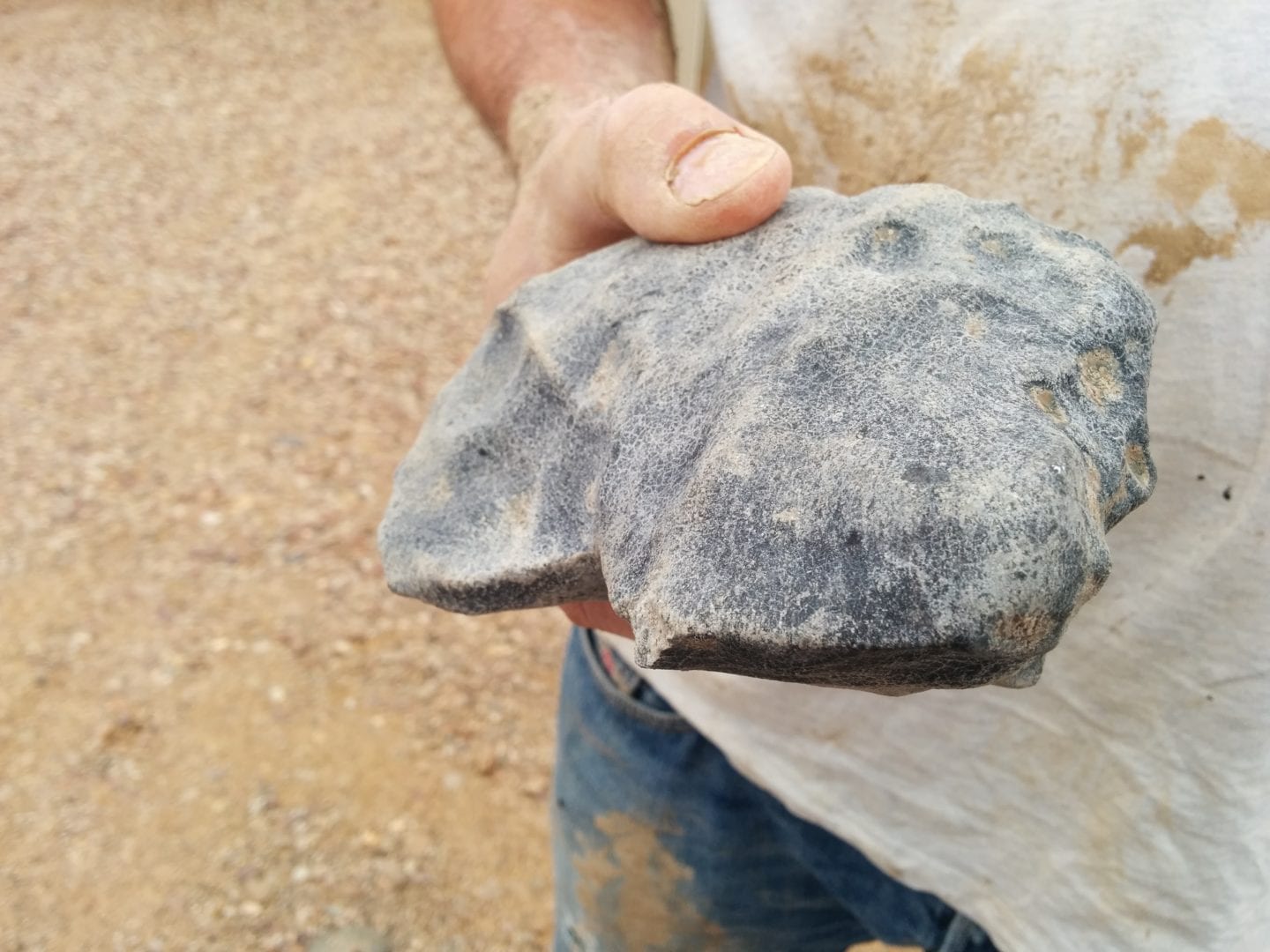Curtin University’s Desert Fireball Network team has celebrated the New Year in style by successfully recovering a recently fallen meteorite from Kati Thanda-Lake Eyre in outback South Australia.
The 1.7 kilogram meteorite, retrieved on New Year’s Eve, is the first recovered as the result of a new camera network comprising 32 remote camera observatories stationed across the Australian outback. The Western Australian and South Australian museums are both collaborators on the project.
Team leader and planetary geologist, Professor Phil Bland, hand-dug the meteorite from a 42cm deep hole in a remote section of the lake bed just hours before the arrival of heavy rains that would have wiped away all trace of the fall site.
“It was an amazing team effort – we got there by the skin of our teeth,” Professor Bland said.
The meteorite fall was witnessed on 27 November by a number of locals in the William Creek and Marree areas, and captured by Desert Fireball Network cameras stationed at William Creek, Mount Barry, Billa Kalina and Wilpoorina.
Desert Fireball Network team members then went to work on image analysis, triangulation and dynamic calculations in order to locate the fall site in Kati Thanda-Lake Eyre.
The three day recovery operation that followed was a complex logistical exercise involving an aerial spotter (piloted by William Creek local Trevor Wright), a remotely operated drone, two searchers on the lake’s surface, and guidance around the area by local Arabana men Dean Stuart and Dave Strangways.
Fellow team member, mechatronic engineer Dr Jonathan Paxman, said the fall site of the meteorite was very difficult to access, being more than six kilometres from a remote part of the lake’s edge, and with the surface quite soft in places due to recent rainfall in the area.
“The fact we have managed to retrieve the meteorite at all is remarkable,” Dr Paxman said.
“Our people worked around the clock to reduce the data, enabling rapid recovery of something that would have been lost if we’d gotten there any later.
“Observations from the air turned out to be quite critical in the end. The impact site had deteriorated quite considerably in recent rain, and as a result was quite hard to see from the ground.”
Team member Robert Howie said the meteorite was embedded in the thick salt lake mud, and covered by softer and wetter mud due to rain which had fallen between the time of impact and recovery. Heavy rainfall has since started to fill Kati Thanda-Lake Eyre with water.
Professor Bland said the meteorite – thought to be a chondrite or stony meteorite – provided an example of material created during the early formation of the Solar System more than 4.5 billion years ago.
“This meteorite is of special significance as the camera observations used to calculate the fall positions have also enabled the solar system orbit of the meteorite to be calculated, giving important contextual information for future study,”
Professor Bland, who is supported by an Australian Research Council Laureate Fellowship, said the discovery held added significance for the Desert Fireball Network team.
“It demonstrates beyond doubt that this giant machine that we’ve built really works.
“We’ve got a lot more rocks on the ground. This recovery will be the first of many – and every one of those meteorites will give us a unique window into the formation of the Solar System.”
Professor Bland said the team certainly hadn’t expected to spend New Year’s Eve digging for a meteorite on Lake Eyre, but the result had made it all worthwhile.
“A big thanks to the Arabana people as well for giving us access to the lake surface at such short notice. We couldn’t have done this without them.”



